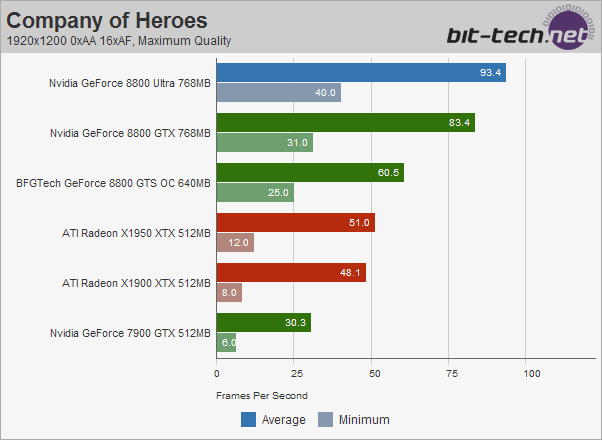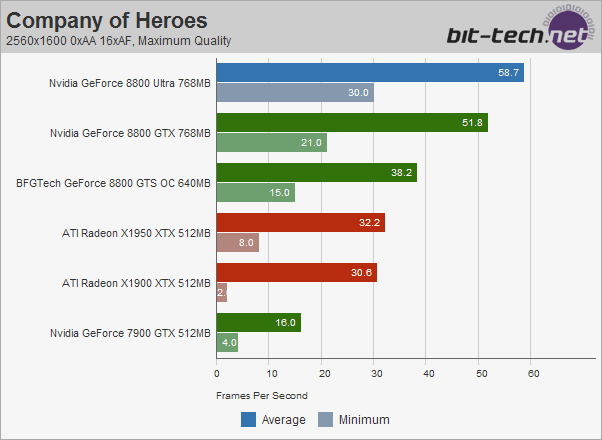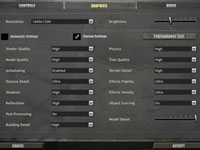Company of Heroes
Publisher: THQWe used the full retail version of Company of Heroes patched to version 1.5.0. It's touted as one of the best real-time strategy games of all time. Not only is the gameplay incredibly good and immersive, the graphics engine is simply stunning, making extensive use of post processing and advanced lighting techniques in the fully destructible environment. It's also scheduled to get a DirectX 10 update very soon.
The graphics already look superb, but with the additional performance benefits and image quality enhancements that DirectX 10 will bring, we're expecting it to look even better than it does now. Relic tells us that it plans to make extensive use of the geometry shader, with the addition of things like point shadows and also fuzzy grass support too. By fuzzy grass, Relic means grass that will have micro displacements that break up the detail in the base terrain texturing.
Relic also plans to leverage some of the other benefits to DirectX 10, to improve performance with more graphical features turned on. The developer's plan to add more detail into the world with more smaller object details in the world. Of course, all of these will react with the world and will be fully destructible like every other element in the Company of Heroes world. For our testing, we used the in-built demo to gauge performance - in this rolling demo, there is heavy use of water, lighting, explosions and also masses of vegetation and it represents fairly typical performance throughout the game.
We had some problems getting ATI's cards to run with anti-aliasing enabled, so we have limited comparisons between the cards to 0xAA 16xAF at 1280x1024, 1600x1200 and 1920x1200. All in-game details were set to their maximum values.



At 2560x1600 though, you are going to notice smoother gameplay, as the Ultra’s minimum frame rate was almost 50 percent higher than the minimum recorded with the GeForce 8800 GTX, and never drops below 30 frames per second. In terms of average frame rates, the gap between the Ultra and the GTX is extended to 13.3 percent.
Although you’re not going to see much difference at these kinds of frame rates (aside from some extra smoothness), we’ve had to limit our testing to 0xAA because ATI’s current hardware doesn’t enable anti-aliasing properly in this title. With 4xAA (or higher) at 1920x1200 or 2560x1600, there will be benefits to using the GeForce 8800 Ultra, but it’s questionable whether those benefits are impossible to achieve with a GeForce 8800 GTX and a bit of overclocking.

MSI MPG Velox 100R Chassis Review
October 14 2021 | 15:04










Want to comment? Please log in.